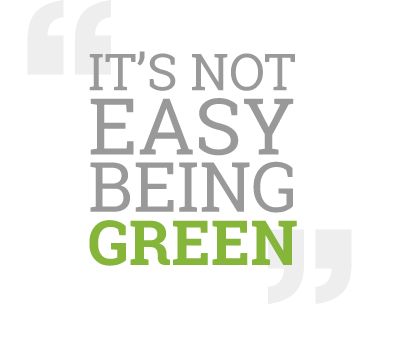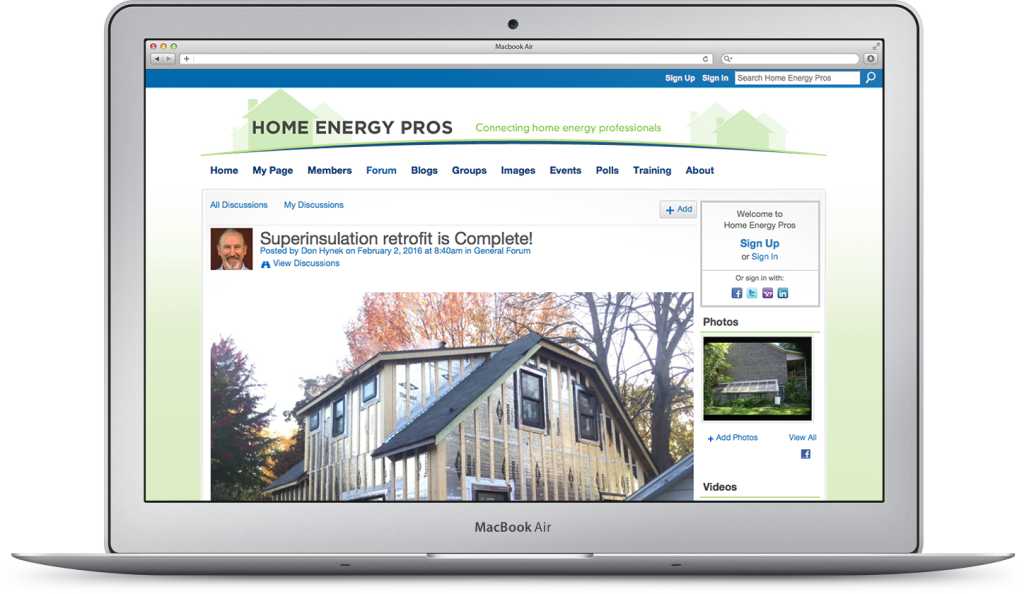 The Department of Energy, working through Berkeley Lab, wanted builders to recommend energy efficient building and retrofit materials confidently and more often. DOE created training programs to reduce the cost of training and re-tooling. But contractors were still not participating at target rates.
The Department of Energy, working through Berkeley Lab, wanted builders to recommend energy efficient building and retrofit materials confidently and more often. DOE created training programs to reduce the cost of training and re-tooling. But contractors were still not participating at target rates.
So, Berkeley Lab charged Usability.org to develop a strategy that would engage and persuade contractors to embrace and recommend energy-efficient materials and strategies.
The research
 As Kermit says, “Its not easy being green.” Our first challenge was to figure out why. From the energy scientist and policy makers’ viewpoint, it seems like a no-brainer. The customers are motivated and educated. And they typically have money. The projects are typically big. There is limited competition. And you get to save energy, and possibly the earth, along the way.
As Kermit says, “Its not easy being green.” Our first challenge was to figure out why. From the energy scientist and policy makers’ viewpoint, it seems like a no-brainer. The customers are motivated and educated. And they typically have money. The projects are typically big. There is limited competition. And you get to save energy, and possibly the earth, along the way.
Our field research showed, however, that contractors thought about the transition very differently.
Their first barrier was a lack of credible information. Contractors needed experience—either direct or from a trusted peer—with the new materials and methods before they felt confident using or recommending them. But the only sources they knew were manufacturers (not credible) and the scientists (credible, but not practical).
The second, but more significant barrier was the motivated, educated energy efficiency customers: It’s awkward when your customer knows more about your field than you do. Before they would shift, contractors needed access to a reliable, efficient way to get smart and stay smarter than their customers.
The solution
 Usability.org imagined—and created—Home Energy Pros—a vibrant online community where home energy pros, including energy auditors, HVAC pros, weatherization specialists, energy scientists, green real estate professionals, government policy makers, and product manufacturers share ideas, resources, education, and knowledge.
Usability.org imagined—and created—Home Energy Pros—a vibrant online community where home energy pros, including energy auditors, HVAC pros, weatherization specialists, energy scientists, green real estate professionals, government policy makers, and product manufacturers share ideas, resources, education, and knowledge.
Home Energy Pros offers blogs from home performance industry experts and pros in the field, and forum discussions on a variety of home energy topics. Pros share videos, photos, event announcements and network with their peers. We provide continuous support and moderation for the community to insure that it continues to thrive.
The results
As of February 2016, Home Energy Professionals has 4800 members networking and sharing knowledge, professional experiences, opinions and solutions on Home Energy Pros.
Non-member visitors– averaging 70,000+month—come to gain actionable insights, guidance and tips from the publications, pictures, videos. They exchange detailed technical knowledge and engage in lively debatee (!). (Anyone can visit. Posters must register.). Contributors include [litany of ee types, add students]
For a more comprehensive discussion of LBL’s social media strategy development and Home Energy Pros, see: Chojnowski, D., K. Straub, E. Mills, and T. White. 2012. “Online Communities for Creating Change: Home Energy Pros,” Proceedings of the 2012 ACEEE Summer Study on Energy Efficiency in Buildings, American Council for an Energy-Efficient Economy: Washington, D.C. Downloadable from: http://evanmills.lbl.gov/pubs.html
About the client
Lawrence Berkeley National Laboratory’s (LBNL) Energy Technologies Area is a global innovation hub for science, technology, and policy solutions to the world’s most critical energy and environment challenges. Their mission is to perform analysis, research, and development leading to better energy technologies and reduction of adverse energy-related environmental impacts.









